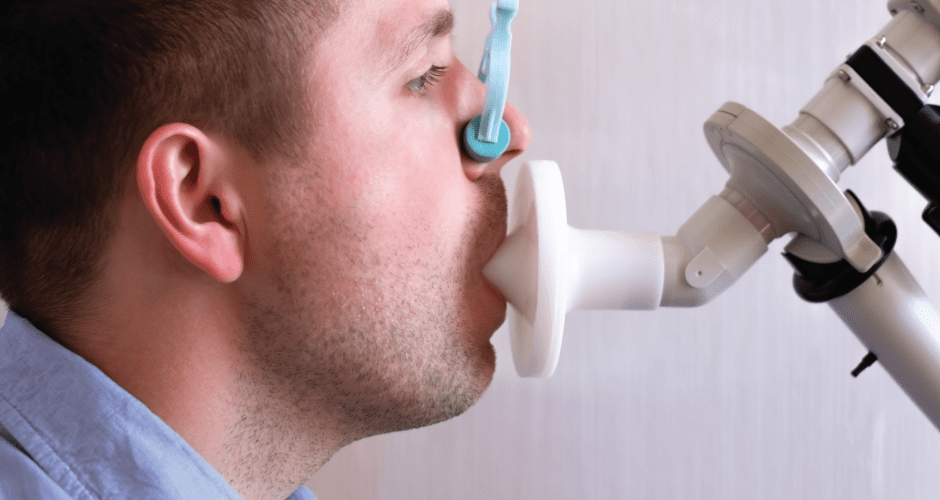In Australia and New Zealand, there is a responsibility for businesses to determine if there are significant risks to their worker’s health due to exposure to these hazardous harmful dust, fibres, fumes or other substances. Along with this determination, businesses and employers need to also decide whether a health monitoring program is required for their workforce. In the instance where it is deemed exposure to a hazardous substances may result in an effect on lung function, the use of spirometry testing can be utilised.

What Is A Spirometry Test?
Spirometry is an objective measure of lung function, and specifically measures the flow and volume of air entering and leaving the lungs. It is used to assess ventilatory function, and assists in differentiation between normal function, and reduced function caused by obstructive and potentially restrictive diseases.
In addition to being a diagnostic tool, spirometry can be used to monitor the lung health of workers who are occupationally exposed to respiratory irritants or allergens. This can be done prior and during employment, as well as being used for disability/impairment evaluations.
Advantages Of Spirometry Screening
 Employer Obligations
Employer Obligations
The use of spirometry testing can ensure that an employer is meeting their obligations, as per Work Health & Safety regulations, in relation to health monitoring programs. This ensures employers are actively monitoring the health of their workers and taking appropriate action as required, to maintain workers’ health.
 Standardised Method
Standardised Method
Employers can be confident that they are using a standardised, reproducible and gold standard method of testing for the measurement and diagnosis of airflow limitation and obstructive conditions
 Support for the employees
Support for the employees
Employees can be assured that they are supported by an employer who cares about their health, via a health monitoring program involving spirometry testing
Our Spirometry Screening Procedure
Step 1
Prior to completing testing, it is ensured that the employee completes appropriate consent, privacy and health questionnaire forms. Spirometry is generally considered to be safe, however there are instances where contraindications to testing are indicated, meaning testing is not safe to be completed. This includes heart conditions, recent lung injury or surgery, history of aneurysm, and infection risk.
Step 2
Employ Health completes the testing using portable equipment. Patients are required to exhale as hard and as fast as they can, from a position of maximal inhalation (breath in), until they cannot blow out any more. 3 tests which are considered reproducible are required, to gain accurate results. From there, the testing produces 3 main readings or results, including the amount and speed of the air breathed out, and the ratio of the two.
Step 3
Once the testing is completed to satisfaction, the Employ Health physiotherapist will interpret the results. The results will indicate whether the findings are considered normal, or whether there is an impairment evident. From there, appropriate action can be taken, which may involve referral for more complex lung function testing.

Why Employ Health?
Utilising Employ Health to conduct spirometry testing enables an onsite physiotherapy program to be a holistic program addressing risk at all levels.
The ability for Employ Health to utilise portable equipment onsite, eliminates the need for businesses to send employees to external testing facilities. This reduces the disruption to operations, and the cost of these disruptions
Other Workplace Screening Tests
Frequently Asked Questions
Simply, spirometry measures the volume and flow of air coming in and out of the lungs. It provides three main measurements, known as Forced Vital Capacity (FVC), Forced Expiratory Volume (FEV), and the the ratio of these two
Appropriately trained medical professionals who can interpret the results should complete spirometry testing. This includes physiotherapists, GPs and nurses.
Spirometry is considered the best standardised, most reproducible and most objective measurement of airflow limitation required for diagnosing obstructive airway conditions (including COPD) and is the gold standard for diagnosing fixed airway obstruction.
Lung function testing is a broad term used for testing measures which assess how well you are breathing. Spirometry is one form of lung function testing.
